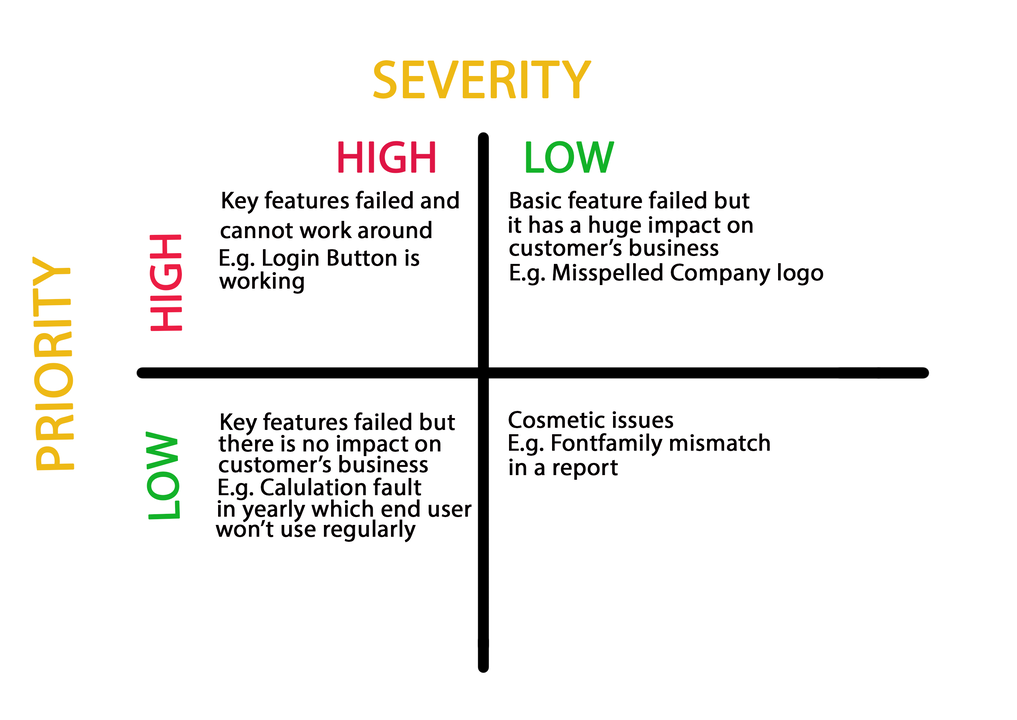- Published on
Bug Triage
- Authors

- Name
- jen chan
In any situation where you discover a regression, maintenance need, or bug, providing the severity of the issue helps technical and managing leaders to prioritize.
Developers cannot simply drop everything to fix a bug.
For example, during MVP development, if a key contributor spends 50% of a sprint fixing bugs instead of doing new feature development, there's a much higher chance of their intended work for the sprint not getting complete. Not hitting general milestones means delivery delays. So on, and so forth.
On the other hand, if you fix every bug you see as it emerges and get your allotted work done, you're overstretching yourself--and due to the nature of agile, business decisions and feature development keeps changing, so all that work you did really might not end up being released in a week.
Note: There is nothing wrong with bugfixing as part of sprints. Maintenance and prevention is a great thing, just that in situations where new product development is the goal, a rule of thumb is no more than 20% of a sprint should be spent on bugfixing.
A higher amount of bugfixing usually happens during product maintenance cycles.
There's 3 aspects to consider when making an assessment of priority for a bug or enhancement:
- Severity
- Priority (in light of business goals and available personnel)
- Dev Effort (individual/team capacity, difficulty)
It's important to keep your team informed of any bugs you're working on, workarounds and solutions during standup and in daily updates.

Determining Severity
Personal
- Am I blocked on my current task?
- Is my task critical to the success of this sprint?
If both are "Yes", then alert your lead and PM. If any are "No", then log a ticket and tell your team, QA and product owner/manager about it.
Team Wide
- Does it block others (from doing their work)?
- Does it prevent us from meeting sprint goals?
If both are "Yes", then alert your lead and PM. If you have the ability to, start on a fix. If there is a workaround for now, inform your team of it. If you are already fixing something critical, have the lead or PM find someone else to solve that. If any are "No", log a ticket, inform your team of any workarounds, and ask your lead and PM to prioritize it for other sprints.
Org Wide
Does this cause:
- Multiple teams to be impacted immediately ?
- The business or its reputation to be placed at risk ?
- Service Outage ?
- Loss of Business ?
- Death, Harm to lives ?
Any of the above that leads to organization-wide impact is of extremely high severity. Think of the easiest way for them to understand the error and its impact; inform your manager and team immediately.
